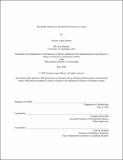| dc.contributor.advisor | Arindam Dutta. | en_US |
| dc.contributor.author | Long-Callesen, Semine. | en_US |
| dc.contributor.other | Massachusetts Institute of Technology. Department of Architecture. | en_US |
| dc.coverage.spatial | a-si--- | en_US |
| dc.date.accessioned | 2020-09-15T22:03:40Z | |
| dc.date.available | 2020-09-15T22:03:40Z | |
| dc.date.copyright | 2020 | en_US |
| dc.date.issued | 2020 | en_US |
| dc.identifier.uri | https://hdl.handle.net/1721.1/127559 | |
| dc.description | Thesis: S.M., Massachusetts Institute of Technology, Department of Architecture, May, 2020 | en_US |
| dc.description | Cataloged from the official PDF of thesis. | en_US |
| dc.description | Includes bibliographical references (pages 75-82). | en_US |
| dc.description.abstract | This thesis examines the formation of a national culture through the case study of the Raffles Museum in the late 1950s. Today, the institution is known as the National Museum of Singapore. In contrast to what we might assume from the museum's current status, it was not obvious that the museum would become a "cultural," "national," and "Singapoream" institution. The Raffles Museum was established in the early nineteenth century and was instrumental in the British colonial search for revenue and resources. In collecting specimens and samples, the museum invented Malaya's distinctive "nature." Importantly, the natural history collections included anthropological and archaeological artifacts. In the early twentieth century, such objects were extracted and separated from the category of natural history to aid the colonial administration in defining a distinctive Malayan "culture," which served governmental purposes. During the period of decolonization, the colonial notion of "Malaya" - and its nature and culture - was adopted by anti-colonial nationalism. The Raffles Museum became part of the endeavor of transforming the synthetic colonial category of "Malaya" into one of national self-determination. The Raffles Museum simultaneously created, destroyed, and preserved Malaya's nature and culture. The museum blurred the lines between the colonial and national, the natural and cultural, the British Malayan and Malayan, taxonomy and preservation, the traditional and modern, the exterior world and the inside of the museum, and other and self. What eventually became Singapore's national culture was initially Malayan, colonial, and natural. | en_US |
| dc.description.statementofresponsibility | by Semine Long-Callesen. | en_US |
| dc.format.extent | 96 pages | en_US |
| dc.language.iso | eng | en_US |
| dc.publisher | Massachusetts Institute of Technology | en_US |
| dc.rights | MIT theses may be protected by copyright. Please reuse MIT thesis content according to the MIT Libraries Permissions Policy, which is available through the URL provided. | en_US |
| dc.rights.uri | http://dspace.mit.edu/handle/1721.1/7582 | en_US |
| dc.subject | Architecture. | en_US |
| dc.title | The Raffles Museum in the shift from nature to culture | en_US |
| dc.type | Thesis | en_US |
| dc.description.degree | S.M. | en_US |
| dc.contributor.department | Massachusetts Institute of Technology. Department of Architecture | en_US |
| dc.identifier.oclc | 1193319840 | en_US |
| dc.description.collection | S.M. Massachusetts Institute of Technology, Department of Architecture | en_US |
| dspace.imported | 2020-09-15T22:03:40Z | en_US |
| mit.thesis.degree | Master | en_US |
| mit.thesis.department | Arch | en_US |
